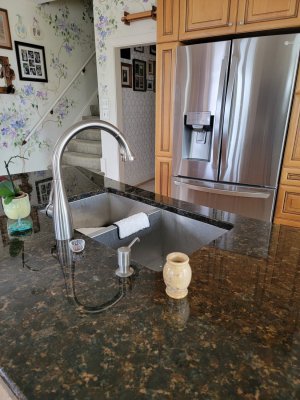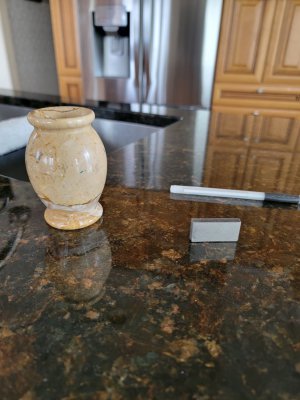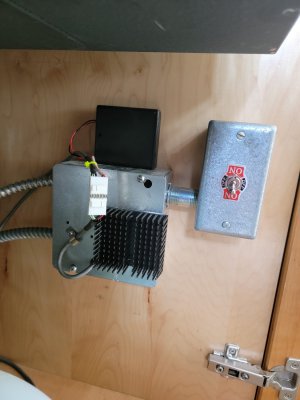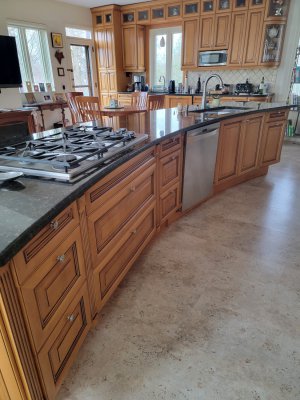I recently mentioned that I had built a MAGNETICALLY ACTUATED GARBAGE DISPOSAL several years ago and @francist ask that I post it.
I never never thought to post this to HM as I did not think it was a machinist topic, but ...
@francist
When remodeling our home in 2012 we wanted a clean looking kitchen island counter top, just flat. We had put in a granite counter top and did not want to have electrical out lets nor a dirty looking push vacuum switch to operate a disposal cluttering the counter top. At the same time we did not want to have to open the cabinet below the sink to turn the disposal on and off. From an electrical code stand point this is a bit in conflict with safety issues. In Europe they sometimes put the electrical outlet at the kick plate of the cabinets rather than on a shelf that sits on the counter. However, this is still rather unhandy in that you have to plug things in at the floor level. However, I had not seen a solution to the garbage disposal switch, but came up with a solution. Our solution to these are in the attached file.
@pontiac428
@Bone Head
I never never thought to post this to HM as I did not think it was a machinist topic, but ...
@francist
I think that’s one of the coolest ideas I’ve heard in a long time!
When remodeling our home in 2012 we wanted a clean looking kitchen island counter top, just flat. We had put in a granite counter top and did not want to have electrical out lets nor a dirty looking push vacuum switch to operate a disposal cluttering the counter top. At the same time we did not want to have to open the cabinet below the sink to turn the disposal on and off. From an electrical code stand point this is a bit in conflict with safety issues. In Europe they sometimes put the electrical outlet at the kick plate of the cabinets rather than on a shelf that sits on the counter. However, this is still rather unhandy in that you have to plug things in at the floor level. However, I had not seen a solution to the garbage disposal switch, but came up with a solution. Our solution to these are in the attached file.
@pontiac428
@Bone Head






